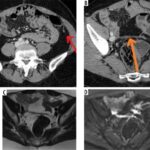Diabetes mellitus is a prevalent condition frequently diagnosed in primary care settings. If left unmanaged, it can result in severe complications, including blindness, amputations, kidney failure, and cardiovascular diseases. Early screening to detect diabetes before symptoms manifest allows for timely intervention, although its impact on preventing end-organ damage remains debated.
While randomized controlled trials suggest that screening for type 2 diabetes does not decrease mortality rates within 10 years, some evidence points to potential mortality benefits over a longer period of 23 to 30 years. For individuals with impaired fasting glucose or glucose tolerance, lifestyle changes and medication can effectively reduce the progression to full-blown diabetes. However, screening for type 1 diabetes is generally not recommended.
Who Should Be Screened for Type 2 Diabetes?
The U.S. Preventive Services Task Force (USPSTF) advises screening for abnormal blood glucose and type 2 diabetes in adults aged 40 to 70 years who are overweight or obese. They recommend repeating the screening every three years if initial results are normal. Individuals with increased risk factors should be considered for earlier and more frequent screening.
The American Diabetes Association (ADA) recommends annual screening for type 2 diabetes in all patients 45 years or older. For younger individuals under 45, screening is advised if they present with significant risk factors for diabetes.
Diagnostic Criteria for Diabetes Mellitus
Diabetes mellitus diagnosis can be confirmed through several tests:
- Fasting Plasma Glucose (FPG): A level of 126 mg/dL or greater indicates diabetes.
- A1C Test: A level of 6.5% or greater is diagnostic for diabetes.
- Random Plasma Glucose (RPG): A level of 200 mg/dL or greater, especially in individuals with classic hyperglycemia symptoms, suggests diabetes.
- 75-gram Two-Hour Oral Glucose Tolerance Test (OGTT): A plasma glucose level of 200 mg/dL or greater two hours after the glucose load confirms diabetes.
It is recommended to confirm these results with a repeat test on a different day. However, a single random plasma glucose reading of 200 mg/dL or higher accompanied by typical signs and symptoms of hyperglycemia is usually sufficient to diagnose diabetes. Routine additional testing to determine the specific cause (etiology) of diabetes is generally not necessary in initial diagnosis.
Type 1 Diabetes Screening
Screening for type 1 diabetes in the general population is not currently recommended due to its lower prevalence and different disease mechanism compared to type 2 diabetes. Screening strategies and recommendations are primarily focused on type 2 diabetes due to its greater public health impact and potential for early intervention through lifestyle and pharmacological approaches.
Conclusion
Early diagnosis and screening for diabetes mellitus, particularly type 2 diabetes, are crucial steps in managing the condition and mitigating potential long-term complications. Following established guidelines from organizations like USPSTF and ADA ensures appropriate screening practices are implemented, targeting at-risk populations and utilizing reliable diagnostic criteria for timely intervention and management.

